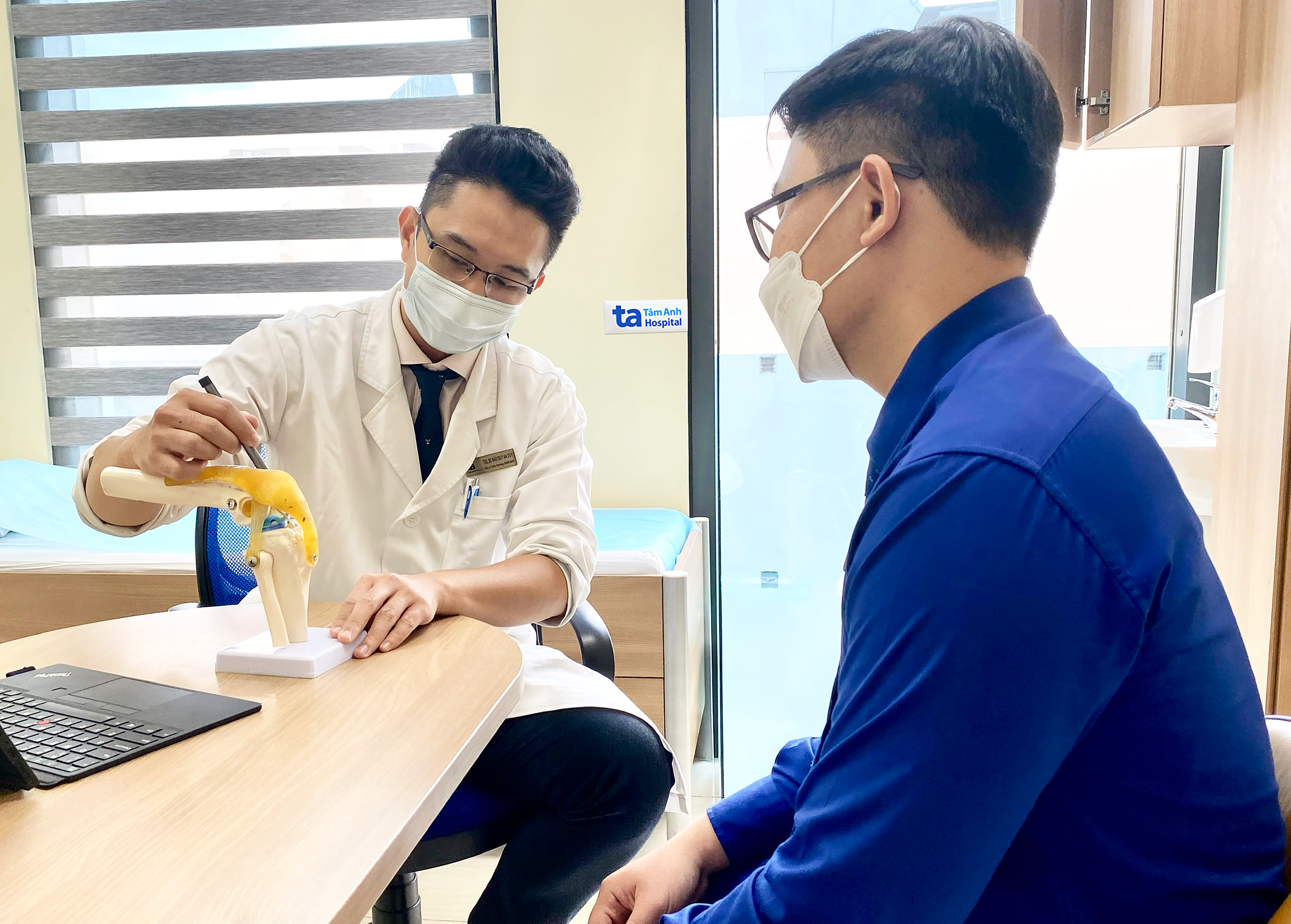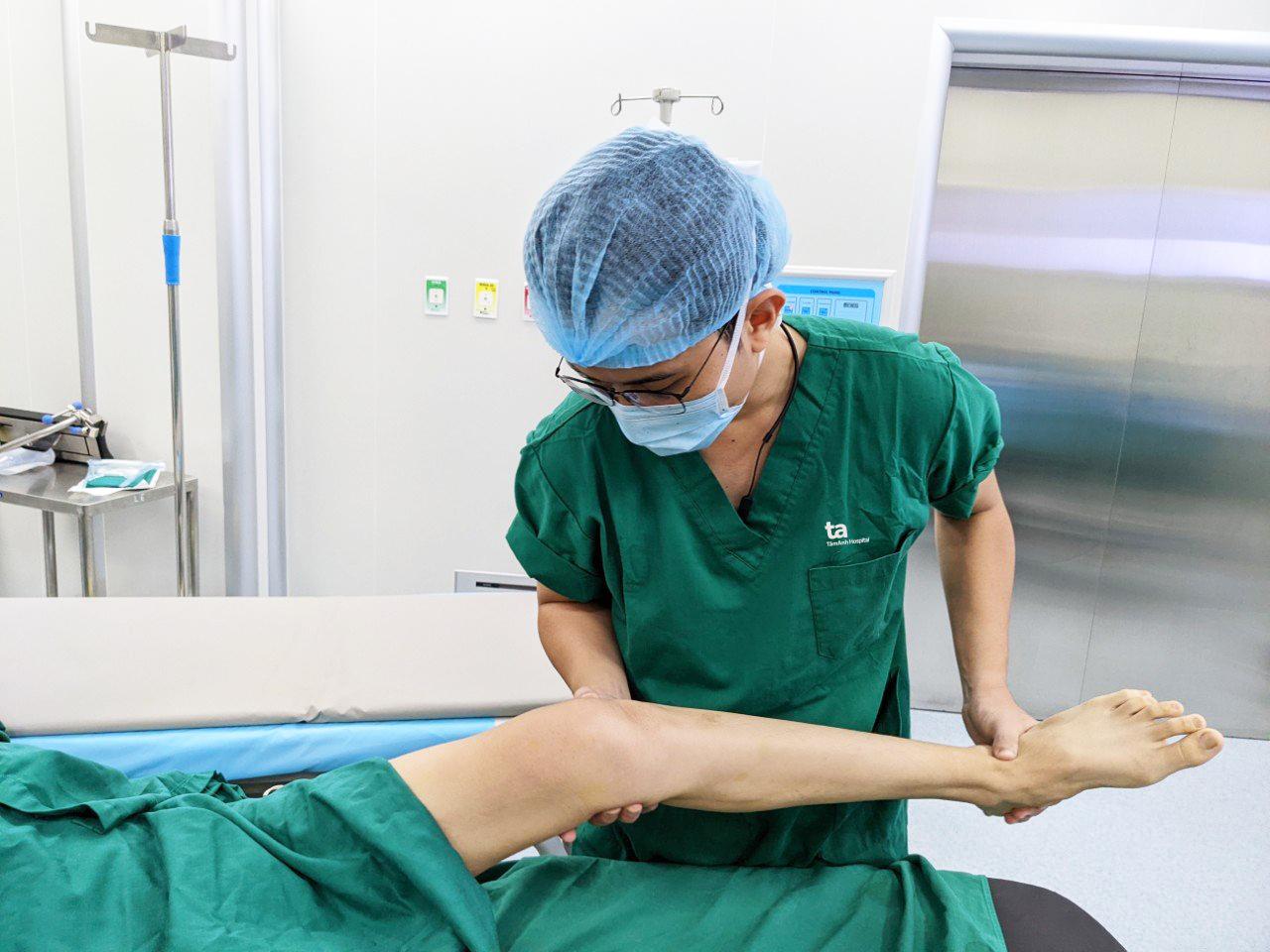Knee pain caused by playing sports is a common problem, occurring when players experience injuries or use improper techniques, according to Doctor Dao Duy An Duy, from the Center for Orthopedic Trauma at Tam Anh General Hospital in Ho Chi Minh City. Here are some frequent causes.
Muscle strains and sprains are soft tissue injuries around the knee joint caused by overuse or inadequate warm-up. Muscle strains happen when muscle fibers are overstretched, leading to pain, stiffness, or weakness. Sprains, on the other hand, occur when ligaments around the joint are stretched or torn due to sudden force, often during abrupt changes in direction or improper landing techniques. While strains and sprains are minor injuries, if left untreated, they can become chronic and reduce long-term mobility.
Ligament injuries are among the most common causes of knee pain, especially injuries to the anterior cruciate ligament (ACL). This often happens due to sudden changes in direction or incorrect landing while exercising or playing sports.
Meniscus tears also contribute to knee pain. The meniscus reduces friction between the thigh bone and shinbone. Sudden twisting movements of the knee can damage it, causing pain and swelling.
Cartilage damage is another concern. During sports, especially high-impact activities like soccer, running, and tennis, the knee joint endures significant compressive forces, twisting motions, or sudden impacts. These can damage the cartilage, leading to pain, swelling, and reduced knee mobility.
 |
Doctor Duy explains a patient's knee condition. Illustrative photo: Provided by the hospital. |
Patellar tendonitis is common in athletes participating in jumping sports like long jump and high jump. It results from inflammation of the patellar tendon, which connects the kneecap to the shinbone, due to repetitive jumping motions.
Knee bursitis, the inflammation of the bursa (the fluid-filled sac that cushions the knee joint), causes swelling, warmth, redness, and pain, especially during bending, straightening, or prolonged standing. It often occurs after repetitive activities like jumping, running, or frequent kneeling. Without rest and early treatment, it can become persistent and affect mobility.
Iliotibial (IT) band syndrome arises when this band of tissue rubs excessively against the thighbone near the knee, causing inflammation and burning pain on the outer knee. The pain often intensifies when running downhill, climbing stairs, or repeatedly bending and straightening the knee.
While less common, patellofemoral instability, where the kneecap dislocates, can cause severe pain and limit mobility. The kneecap may shift to the left or right.
Osteoarthritis can affect athletes or those engaging in high-intensity sports, particularly with recurrent knee injuries or cartilage wear over time. Patients experience a dull ache, morning stiffness, and it can become chronic if not managed promptly.
 |
A doctor examines a patient's knee before surgery. Illustrative photo: Tam Anh General Hospital. |
Doctor Duy recommends seeking medical attention if knee pain after playing sports is accompanied by unusual symptoms like pain not subsiding after a few days of rest, significant swelling or deformity, discomfort while walking or climbing stairs, signs of infection (fever, warm red skin), or numbness/tingling in the lower leg. Depending on the specific situation, doctors may order tests, X-rays, 3 Tesla MRI scans, 100,000-slice CT scans, etc., for accurate diagnosis and appropriate treatment.
Individuals who frequently play sports, train intensely, or have a history of injuries should undergo regular musculoskeletal check-ups to detect potential risks related to knee pain early and receive timely treatment.
Phi Hong
| Readers can submit questions about musculoskeletal issues here for doctors to answer. |












